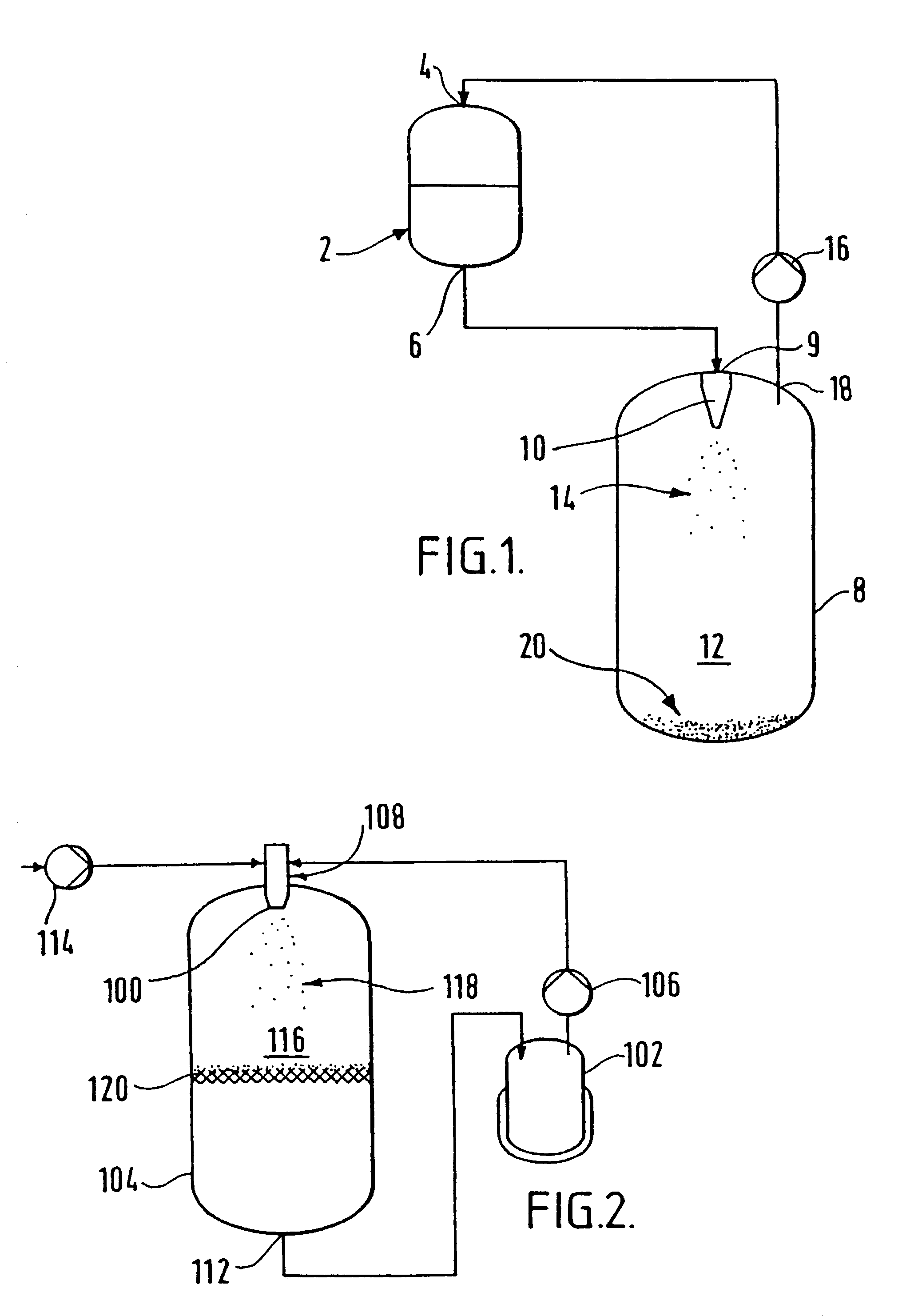Method for the production of particles
a technology of particle and production method, applied in the field of particle production, can solve the problems of reducing the efficacy of a preparation containing the active ingredients, destroying the crystal form, and inevitable rise in the solid temperatur
- Summary
- Abstract
- Description
- Claims
- Application Information
AI Technical Summary
Problems solved by technology
Method used
Image
Examples
example 1
[0097]Phenyl acetic acid (10 g) was charged into a first vessel equipped with an agitator and a glass sinter attached to a bottom outlet.
[0098]Keeping the lower outlet of the first vessel closed, 1,1,1,2-tetrafluoroethane (2 kg) was charged into the first vessel. The slurry thus formed was agitated to achieve dissolution of the phenyl acetic acid in the tetrafluoroethane.
[0099]The inlet of a gas compressor was fitted to a second (evaporation) vessel and the outlet was fitted to a tetrafluoroethane storage vessel, via a cooling heat exchanger. The gas compressor was activated.
[0100]The mixture of phenyl acetic acid in tetrafluoroethane was allowed to flow from the first vessel to the second vessel via a flow restriction device, for example, a small aperture nozzle. The solution flow and temperature in each of the first and second vessels was controlled so that the pressure in the first vessel was maintained at about 6 BarG, and the pressure in the second vessel was maintained at abou...
example 2
[0102]A first 5 liter stainless steel vessel was connected to a liquid / liquid mixing flow cell via a gas compressor. A second 5 liter stainless steel vessel was fitted with a filter element fashioned from a sheet glass sinter at the outlet thereof. The inlet of the vessel was connected to the liquid / liquid mixing flow cell.
[0103]Hydrofluorocarbon 134A (HFC) (2 kg) was charged into the first vessel. The compressor was activated, so that the HFC was continuously recycled. The HFC recycling rate was maintained at 300 g / minute.
[0104]A solution of lauric acid (50 g) dissolved in acetone (1 liter) was prepared in a third vessel. The lauric acid solution was introduced into the mixing cell using a gear pump at a flow rate of 30 ml / minute.
[0105]The HFC contacted the lauric acid solution upon exiting the mixing cell. The mixture was sprayed into the second vessel by means of the mixing cell. Upon contacting the lauric acid solution, the acetone was transferred to the HFC by mass transfer. Up...
PUM
| Property | Measurement | Unit |
|---|---|---|
| Temperature | aaaaa | aaaaa |
| Boiling point | aaaaa | aaaaa |
| Polarity | aaaaa | aaaaa |
Abstract
Description
Claims
Application Information
 Login to View More
Login to View More - R&D
- Intellectual Property
- Life Sciences
- Materials
- Tech Scout
- Unparalleled Data Quality
- Higher Quality Content
- 60% Fewer Hallucinations
Browse by: Latest US Patents, China's latest patents, Technical Efficacy Thesaurus, Application Domain, Technology Topic, Popular Technical Reports.
© 2025 PatSnap. All rights reserved.Legal|Privacy policy|Modern Slavery Act Transparency Statement|Sitemap|About US| Contact US: help@patsnap.com

